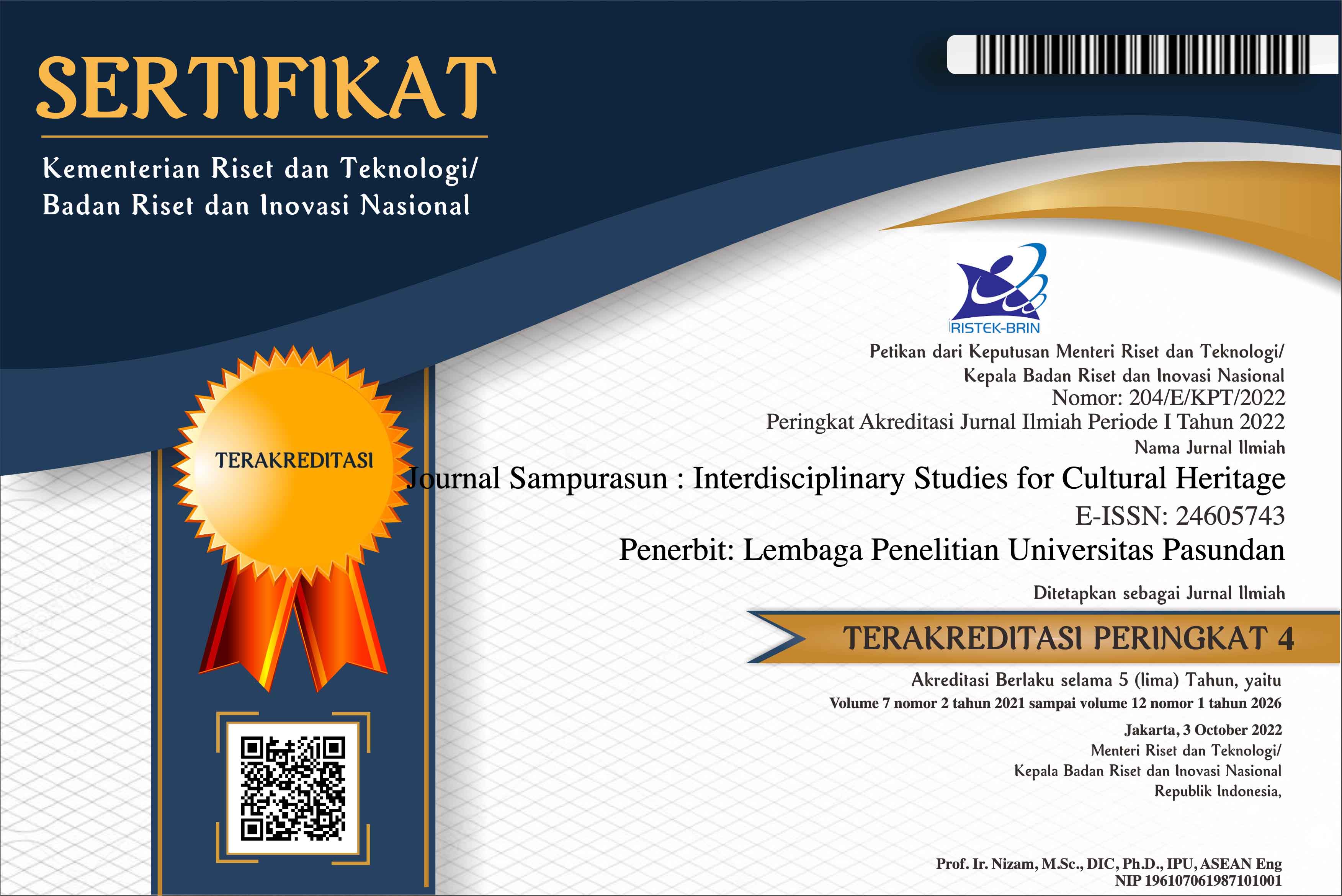HERITAGE MANAGEMENT: THE CASE OF TWO BAROQUE CHURCHES IN ILOCOS REGION, PHILIPPINES
DOI:
https://doi.org/10.23969/sampurasun.v2i2.161Abstract
Four Baroque Roman Catholic churches constructed between the 16th and the 18th centuries during the Spanish period of the Philippines are inscribed in the UNESCO World Heritage List. Two of them are assessed in this study. Generally, the paper aimed to assess the management of the two baroque churches in Region I, Philippines, to wit: the Paoay Church and and Sta. Maria Church. Specifically, it sought to 1) identify the reason for their inscription; 2) discuss the laws and ordinances that provide for the protection and conservation of these sites; 3) discuss how the protection and conservation of these sites are administered; and 4) and determine the extent of the compliance by these sites of the requirements of protection and conservation. There are laws, international and national as well as ordinances passed at the local levels to provide protection and preservation of the heritage sites. The Paoay Church is managed by the following groups, to wit: 1) Paoay Church Restoration Task Force; 2) Municipal Government; 3) Homeowners Association within the Heritage District; and 4) Other NGOs. The Sta. Maria Church, on the other hand, is managed by the different groups that comprise the Sta. Maria Heritage District Council. As conclusions, there are adequate laws to protect the heritage sites. But some provisions are not strictly enforced. The LGUs are very supportive. However, their participation, particularly in Sta. Maria is constrained by lack of funds. Parish priests play a very significant role in the preservation of these churches. Their competence or enlightenment on conservation efforts would spell their success or failure.Downloads
Downloads
Published
Issue
Section
License
Copyright Notice
Authors should not withdraw their submitted papers because the withdrawal wastes voluntary works devoted by an associate editor and reviewers. But, we accept the withdrawal of a submitted paper if authors have unavoidable reasons. In the event that a manuscript is to be withdrawn from submission to Sampurasun Journal, a letter must be sent to the editorial office requesting withdrawal by e-mail (sampurasunjournal@unpas.ac.id) with its scanned PDF file, before the notification of acceptance for publication.
The withdraw request letter must include the following information. Paper ID, Paper title, Authors names, Reason why the paper must be withdrawn, and Date and signatures of all the authors (or signature of the contact author).
If only the contact author signs the letter, he/she must obtain the agreement of the withdrawal from all the other authors and the letter must include the description that all the other authors agreed the withdrawal. The journal will not withdraw a manuscript from peer review until such a letter has been received. Authors must not assume their manuscript has been withdrawn until they have received appropriate notification from the editorial office. Withdrawal of a manuscript subsequent to acceptance for publication will only be granted in the most exceptional of circumstances.
After the paper is accepted for publication, the withdrawal is not permitted in principle. The authors must always pay the charge even if the withdrawal is permitted. Any request of withdrawal that does not follow the above procedure is treated as invalid. If illegal submission, e.g., plagiarized or duplicate submission, is found for a paper, the withdrawal of the paper will never be permitted and the authors will be punished based on the rule. It is not acceptable practice to withdraw a manuscript in the event of acceptance at another journal. This constitutes dual submission. The editorial office of the other journal will be notified of your actions. In such circumstances Sampurasun ISCH may chose to impose appropriate punitive action subject.
Withdrawal Penalty
Author is not allowed to withdraw submitted manuscripts, because the withdrawal is waste of valuable resources that editors and referees spent a great deal of time processing submitted manuscript, money and works invested by the publisher. If author still requests withdrawal of his/her manuscript when the manuscript is still in the peer-reviewing process, author will be punished with paying $200 per manuscript, as withdrawal penalty to the publisher. However, it is unethical to withdraw a submitted manuscript from one journal if accepted by another journal. The withdrawal of manuscript after the manuscript is accepted for publication, author will be punished by paying US$500 per manuscript. Withdrawal of manuscript is only allowed after withdrawal penalty has been fully paid to the Publisher. If author don't agree to pay the penalty, the author and his/her affiliation will be blacklisted for publication in this journal. Even, his/her previously published articles will be removed from our online system.


















